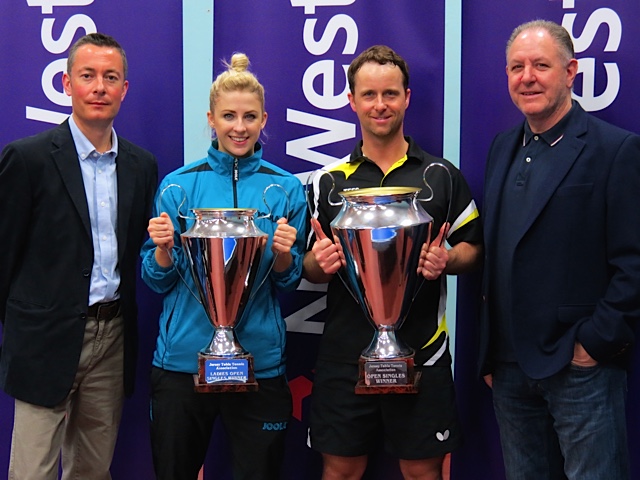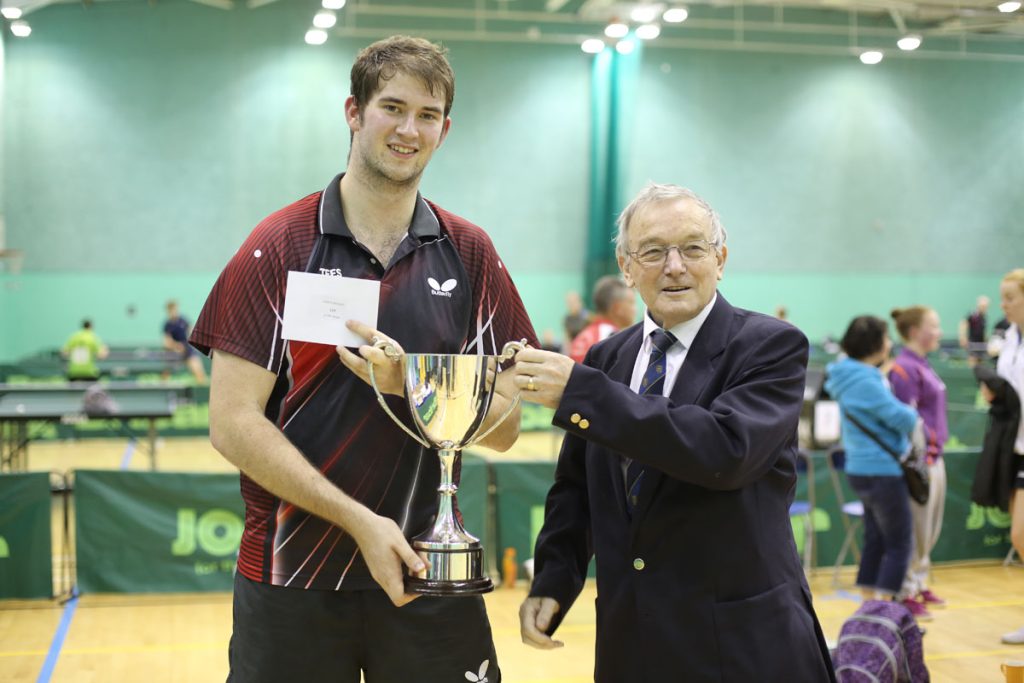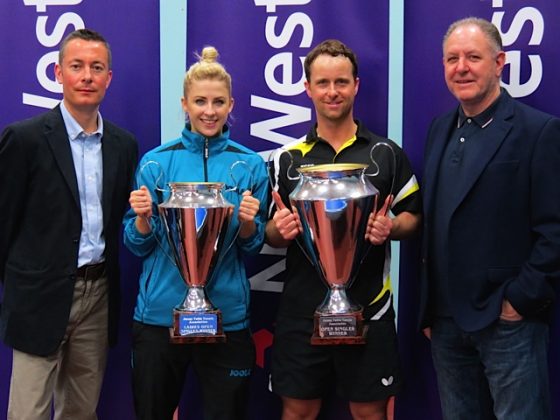The London Grand Prix this weekend will see the end of an era dating back to the 1996/97 season, when the Grand Prix Series was launched. From next season, the events will transition to Tiered Open Tournaments.
Diane Webb, Chair of the Archives, Museum & Records Committee, looks back over the history of the series.
The Grand Prix Series was the brainchild of former international, Mike Johns, who after a coaching appointment in Australia returned to these shores and was disappointed to see how much the tournament circuit had declined. One of the major contributing factors was due to escalating costs making tournaments less viable for those organisations running them.
So, in 1996/97 the Grand Prix Series was launched with 14 events. To keep entry fees down, a minimum number of umpires were used and players had to umpire most of the matches, it took a while for them to get used to the idea!
The concept of Banded events was introduced which meant players could play against opponents at a similar level and with ‘Open Singles’ too, resulted in everyone being catered for, from Local League player to internationals. It gave all players the chance to win an event and this proved enormously popular. There were Under-21 events and Veteran events, so again, a range of age categories were covered.
Later, in 2007/08, Men’s and Women’s Restricted Singles became part of the weekend merging into a Mixed Restricted event in 2008/09.
There were regular entries from the Home Countries international squads as well as players from Australia, China, France, Italy, Germany, Hungary, Japan, Moldova, the Netherlands, Nigeria, Russia, Sweden and many more.
The Grand Prix Committee, which was in force for most of the time that the Series ran, wanted to make sure that the events were “player friendly”. They had an excellent record of listening to ideas and challenging established procedures, it was here that 11 Up was first played. A Player Representative was on the Committee apart from the initial early years, who acted as a link between the players and the officials.
One objective which was nurtured was that, by running tournaments on a regional basis, local organisers would be found who would in the future be prepared to take on the running of a Grand Prix tournament. It was a good source for developing people in this role from the number of highly competent local organisers, and produced many who went on to a higher level.
That first season comprised five regional tournaments and the top 16 players in the various events qualified for the finals, which were played in Bath. Alan Cooke and Kubrat Owolabi were the first overall champions and also the winners of the finals in that first series which was regarded as a resounding success.
As a result, the number of regional events was increased to eight and later to 12 in 1998/99, plus the finals.
Satellite Grands Prix became a feature, with the most popular being in Jersey over Easter weekends and included team events for juniors, seniors and veterans in a three-day extravaganza. The trophies for the winners were impressive.

In 2000/01 it was generally agreed that the finals, whilst good in the early years, had run their course and were discontinued. The Series also dropped to 10 main events, which was felt to be the optimum number, and for the first time included an event in Newtownabbey, Co. Antrim.
Then, in 2002/03, the Doubles events were also dropped, but re-introduced in 2011/12 but as a mixed event. A further change happened in 2005/06 when junior events at four Grands Prix were trialled and enhanced prize money was also on offer at two events, but neither of these initiatives were extended to the next season.
The Grand Prix Committee was never afraid to try new things and the series continued to evolve and innovate so that it could give the customers, ie the players, what they wanted from the series – lots of table tennis and value for money.
In terms of prize money, the series went from strength to strength, with a total prize fund of £6,000 in its initial season, to in excess of £22,000 at its peak. The value of the prize money for each event was based on the previous season’s entries – one way of looking at equality. It meant that sometimes those in Band 6 won more than those in Band 2.
Then, of course, there was the season’s totting up of points to see who was in the list for the end of season bounty. It often led to those who supported the Series the most taking away a much-appreciated cheque, although the end of season fund was stopped from the 2018/19 season.
From its inception until 2013, the overall referee for the Grand Prix Series and referee at more than 50 of the tournaments was Mick Strode. He was an immense presence and influence and much of the success of the Grand Prix Series was due to him for his professional yet friendly and flexible way of running so many tournaments. It was only ill health that meant he was not able to continue. However, his legacy lived on through the award of the Mick Strode trophies for the Men’s and Women’s Singles end of season champions.
Many players made their name on the Grand Prix circuit and in its heyday provided them with the opportunity to battle for the various titles. It gave some of the younger players the chance to learn their trade and test their skill against many different opponents.
Gavin Rumgay of Scotland and Chris Doran were both overall champions four times but the supreme Grand Prix champion was Welshman, Ryan Jenkins, with eight titles and more than 50 Men’s Singles wins. Karina Le Fevre was the female who achieved greatest success with an impressive five titles to her name.







